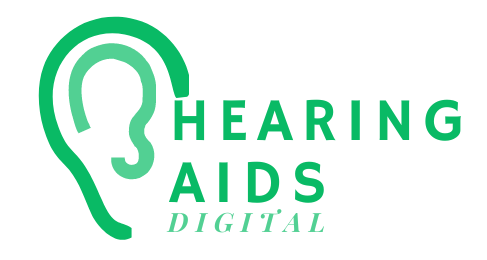In today’s rapidly evolving digital landscape, the importance of Data security and effective data breach prevention has become critically significant, especially within the healthcare industry. As technological innovations progress at a swift pace, the personal data of patients becomes increasingly vulnerable to various cyberattacks. Therefore, it is essential for healthcare organisations to implement a comprehensive and resilient strategy for data protection. This article delves into the vital role of data security within the healthcare sector and explores a range of effective strategies and best practices aimed at minimising the risks associated with data breaches.
Understanding the Crucial Role of Data Security in Healthcare
The healthcare industry is tasked with managing vast amounts of highly sensitive information, including medical records and personal data of patients. Protecting this information transcends mere legal obligations; it is crucial for upholding patient privacy and maintaining the integrity and reputation of healthcare organisations. The fallout from a data breach can be catastrophic, resulting in severe legal ramifications, substantial financial losses, and a significant erosion of patient trust and loyalty.
To effectively address the growing significance of data security in healthcare, organisations must comprehensively understand the potential risks and consequences associated with data breaches. By recognising the intrinsic value and sensitivity of patient data, healthcare providers can prioritise the development and implementation of robust data security measures. This entails investing in essential resources, cutting-edge technologies, and specialised expertise to effectively shield patient information from a myriad of potential threats.
Gaining Insight into Data Breaches within Healthcare

Data breaches within the healthcare sector transpire when unauthorised individuals gain illicit access to patient data, either by hacking into systems or by physically stealing data. These breaches can be attributed to various factors, including inadequate security measures, human error, or deliberate cyberattacks. It is imperative for healthcare organisations to proactively enact comprehensive measures aimed at preventing such incidents and protecting patient information.
A significant factor contributing to data breaches in healthcare is the widespread lack of awareness regarding potential vulnerabilities. Organisations must remain vigilant and informed about the latest cybersecurity threats and trends that specifically affect the healthcare sector. This heightened awareness enables them to accurately identify existing weak points within their systems and implement appropriate safeguards to mitigate associated risks.
Furthermore, healthcare organisations must acknowledge the essential role that employee education and awareness play in preventing data breaches. Human error, such as falling victim to phishing attempts or using weak passwords, can create substantial vulnerabilities within the system. By providing regular training sessions focused on data security best practices, organisations can empower their workforce to become the first line of defence against potential breaches.
Proven Strategies for Enhancing Data Security and Preventing Data Breaches
1. Regularly Conduct Comprehensive Risk Assessments
Healthcare organisations should routinely conduct thorough risk assessments to identify vulnerabilities present within their data security systems. This process involves evaluating potential threats, assessing the impact of a breach, and implementing controls to effectively mitigate these risks. By understanding their security gaps, organisations can develop targeted strategies to bolster the protection of patient data.
To conduct a detailed risk assessment, healthcare organisations must consider both internal and external factors that could pose threats to data security. This includes evaluating the efficacy of existing security measures, identifying possible vulnerabilities in network infrastructure, and assessing employee awareness and compliance with established data security protocols.
Moreover, risk assessments should reflect the continuously evolving landscape of cybersecurity threats. By remaining updated on the latest trends and tactics employed by hackers, organisations can proactively address emerging vulnerabilities and implement appropriate countermeasures to protect patient data.
2. Enforce Robust Access Controls to Prevent Unauthorised Access

Access controls are vital in preventing unauthorised access to patient data. Healthcare organisations must enforce strict user authentication protocols, such as multi-factor authentication, to ensure that only authorised personnel can access sensitive information. Furthermore, implementing role-based access controls limits data access to specific individuals based on their job roles, thereby enhancing overall data security.
In addition to user authentication and role-based access controls, organisations should establish stringent password policies. This includes enforcing complex password requirements, mandating regular password updates, and prohibiting the reuse of previous passwords. By adopting these measures, organisations can significantly reduce the likelihood of unauthorised access to sensitive patient data.
Moreover, organisations can leverage advanced technologies, such as biometric authentication, to further fortify access controls. Biometric data, including fingerprints or facial recognition, provides an additional layer of security, ensuring that only authorised individuals gain access to sensitive information.
3. Deploy Effective Data Encryption Techniques
Encryption serves as a fundamental strategy for safeguarding patient data from unauthorised access. Healthcare organisations should adopt robust encryption algorithms to secure sensitive information both at rest and in transit. This ensures that even if data is intercepted, it remains unreadable and unusable to unauthorised parties.
To effectively implement data encryption, organisations should utilise industry-standard encryption protocols. These protocols employ complex algorithms to convert sensitive data into an unreadable format, rendering it nearly impossible for unauthorised individuals to decipher the information.
Additionally, encryption should be applied not only to data stored within organisational systems but also to data transmitted between various systems or devices. This includes encrypting data sent via email, stored on portable devices, or transferred between different healthcare facilities.
4. Provide Employee Training on Data Security Best Practices
Human error remains one of the leading causes of data breaches in healthcare. To mitigate this risk, organisations should prioritise comprehensive employee training on data security best practices. This training should encompass topics such as recognising phishing attempts, creating strong passwords, maintaining updated software, and exercising caution when sharing sensitive information. Regular training sessions and awareness initiatives should be conducted to reinforce these essential practices.
Employee training should cover a wide array of topics related to data security, including recognising social engineering techniques, identifying suspicious emails or attachments, and understanding the importance of reporting any potential security incidents. By fostering a culture of data security awareness, organisations can significantly reduce the chances of human error leading to a data breach.
Alongside training programmes, organisations should establish clear policies and procedures for managing sensitive data. Employees must be informed about the consequences of non-compliance with data security protocols and the critical importance of adhering to established guidelines to protect patient information.
5. Consistently Update and Patch Systems to Mitigate Vulnerabilities

Outdated software and systems are often prime targets for cyberattacks. Healthcare organisations must adopt a proactive approach to consistently update and patch their systems, including operating systems, applications, and network infrastructure. This helps to close security loopholes and minimise the risk of potential breaches.
Software vendors regularly release updates and patches to address security vulnerabilities identified in their products. By promptly applying these updates, organisations can ensure that their systems remain safeguarded against known vulnerabilities that hackers may exploit.
In addition to regular updates, organisations should implement a comprehensive patch management strategy. This involves maintaining an inventory of all software and hardware components within the network, monitoring for available patches, and applying them in a timely manner to secure patient data.
6. Formulate Comprehensive Incident Response Plans
Despite the presence of robust preventive measures, data breaches can still occur. Healthcare organisations should create and continually update their incident response plans to effectively manage and mitigate the impact of such incidents. These plans should outline the necessary steps to identify, contain, and recover from a breach, ensuring minimal disruption to operations and swift resolution of the situation.
Incident response plans should clearly designate the roles and responsibilities of key personnel involved in responding to a breach. This includes assigning a response team, establishing communication channels, and defining escalation procedures to ensure a coordinated response.
Moreover, organisations should conduct regular drills and simulations to test the effectiveness of their incident response plans. This practice enables them to identify any gaps or areas for improvement, ensuring their response capabilities are consistently enhanced.
7. Continuously Monitor and Audit Systems for Security Compliance
Ongoing monitoring and auditing of systems are crucial for detecting any suspicious activities or potential security breaches. Healthcare organisations should implement security monitoring tools and conduct regular internal and external audits to identify vulnerabilities or signs of unauthorised access. Timely detection allows for swift action, preventing or minimising the damage caused by a breach.
Monitoring and auditing systems involve employing advanced technologies and techniques to identify potential security incidents. This includes utilising intrusion detection and prevention systems, log analysis tools, and security information and event management (SIEM) solutions to maintain robust data security.
In addition to technological measures, organisations should establish processes for conducting regular internal and external audits. These audits assess the effectiveness of existing security controls, identify any gaps or vulnerabilities, and provide actionable recommendations for improvement to further enhance data protection.
Ensuring Robust Protection of Patient Data: A Strategic Call to Action for Healthcare Organisations
Safeguarding patient data holds paramount importance in the healthcare industry. By adopting a thorough approach to data security and data breach prevention, healthcare organisations can effectively protect sensitive information, uphold patient trust, and comply with relevant data protection regulations. Regular risk assessments, stringent access controls, effective encryption, comprehensive employee training, timely system updates, well-structured incident response plans, and consistent monitoring are all crucial elements of a robust data protection strategy. By implementing these strategies, healthcare organisations can dramatically reduce the risk of data breaches and ensure the confidentiality, integrity, and availability of patient data.
Q1: What Makes Data Security Essential in the Healthcare Sector?
A1: Data security is indispensable in the healthcare industry to safeguard sensitive patient information, uphold the integrity of healthcare organisations, and avert legal complications and financial repercussions.
Q2: What Are the Common Causes Behind Data Breaches in Healthcare?
A2: Data breaches in healthcare can arise from inadequate security measures, human error, targeted cyberattacks, and a lack of awareness regarding potential vulnerabilities.
Q3: How Can Healthcare Organisations Bolster Data Security?
A3: Healthcare organisations can enhance data security by conducting regular risk assessments, implementing robust access controls, employing encryption, training employees on data security best practices, consistently updating and patching systems, establishing incident response plans, and continuously monitoring and auditing systems.
Q4: How Does Employee Education Contribute to Preventing Data Breaches?
A4: Employee education is vital in preventing data breaches, as human error is a primary cause. By educating employees on data security best practices, organisations can decrease the chances of falling victim to phishing attempts, using weak passwords, and carelessly sharing sensitive information.
Originally posted 2023-08-06 01:48:06.
The post Data Security: Essential Strategies for Preventing Data Breaches in Healthcare appeared first on Healthcare Marketing Service.







